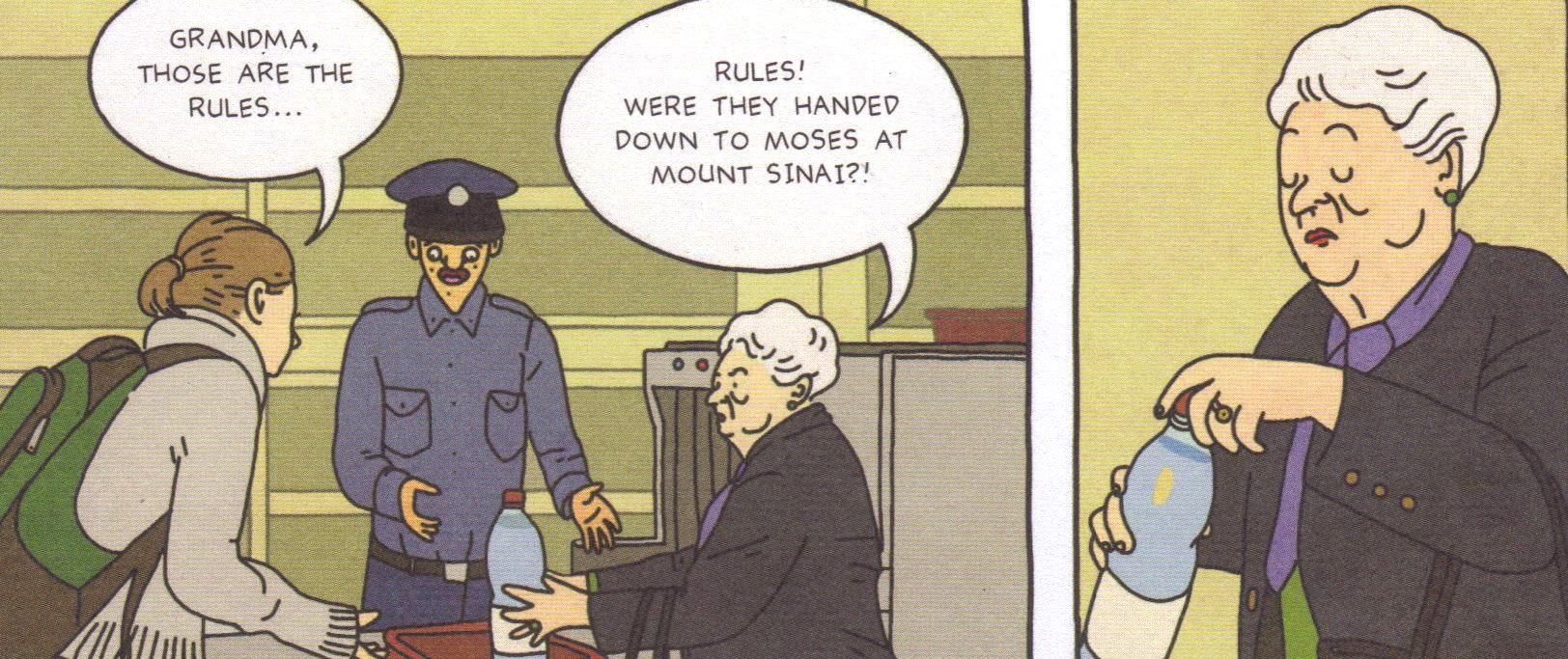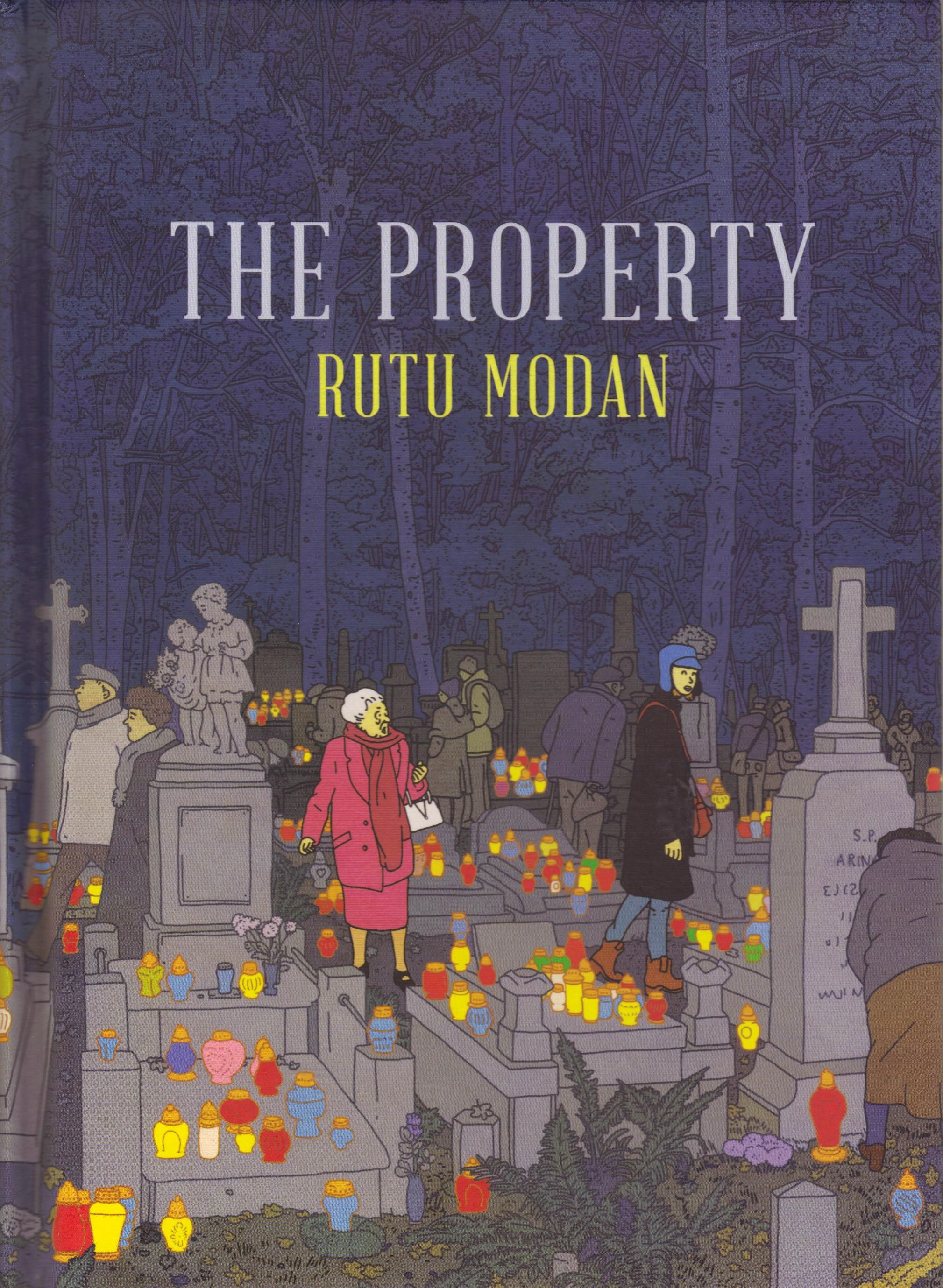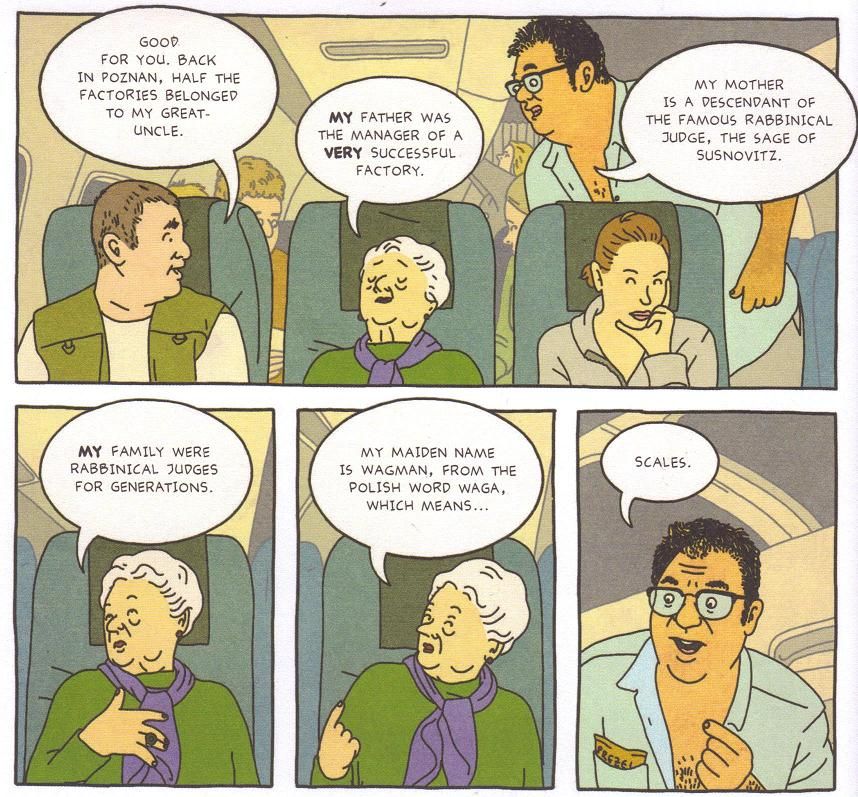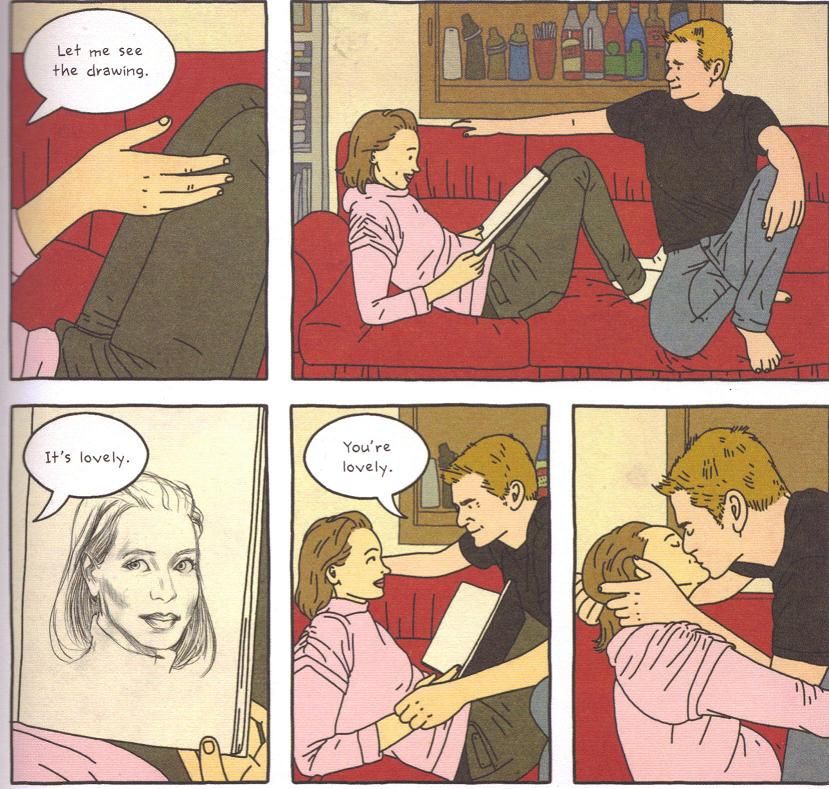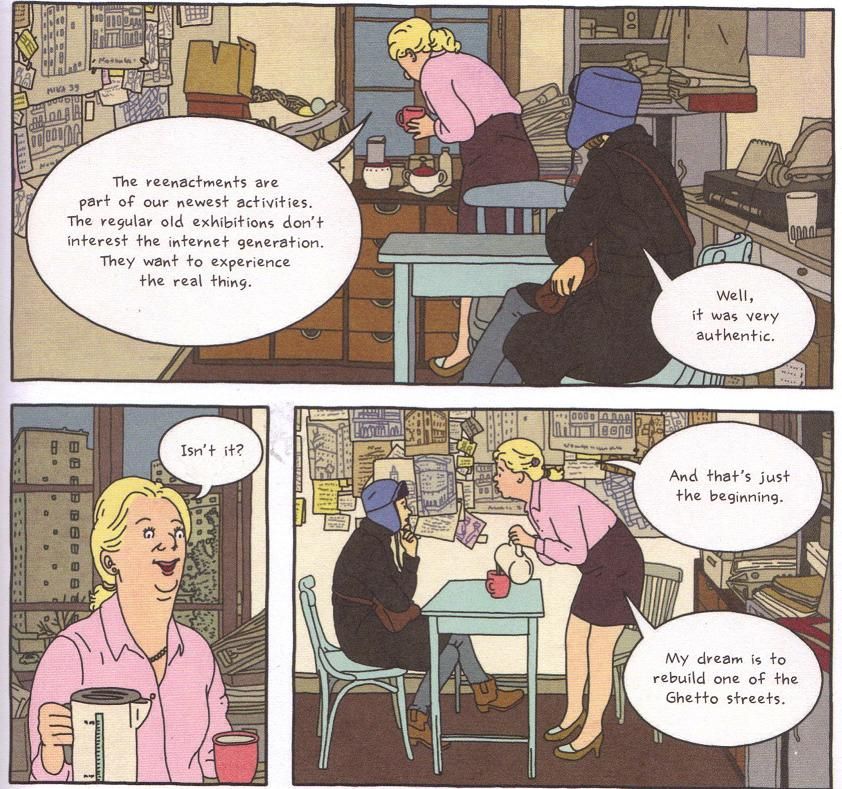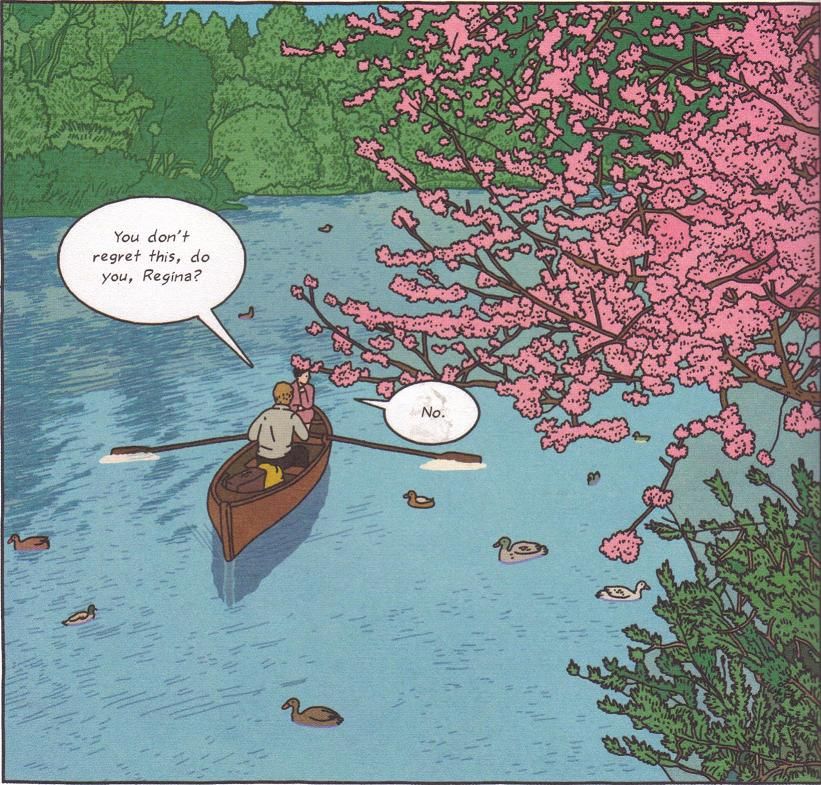Rutu Modan's first graphic novel was superb. Will the follow-up be at the same level? It's a question to boggle the mind!
The Property, by the aforementioned Rutu Modan, is published by Drawn & Quarterly and costs $24.95. I've read some graphic novels this year better than it is, but not many. That's all you need, right?
Oh, I kid. You know me. So what's up with The Property?
Well, Modan gives us Mica Segal and her grandmother Regina, who fly out of Tel Aviv on their way to Warsaw to stake a claim to some property her grandmother owns. Early on, Modan nicely provides us with an interested fellow on their flight, who quizzes Regina so we get some exposition. She wasn't in Poland during the war - she left just before it began, and her granddaughter has never been there, because Regina seems to think reconnecting with your past is worthless. Regina is only interested in the property, as she tells us that her father was a successful factory owner before the war. She brought Mica along because, as she says, she's too old to be running around town. On the plane, they meet Avram Yagodnik, a son of one of Regina's friends whom Mica knows vaguely. He's a fairly unctuous fellow, and Mica quickly discovers that he has an odd interest in her business in Warsaw. Then, when they land, Regina looks at something in the hotel's phone book and suddenly is no longer interested in the property and wants to return to Israel. That, of course, makes Mica suspicious, and she decides to hunt down the lawyer connected to the case and find out what's what. Along the way she meets Tomasz, with whom she begins a tenuous affair. Regina, meanwhile, visits an apartment that has been converted into a restaurant (which is kind of weird; I guess that's normal in Poland, but it threw me for a second) and briefly meets the old man living there. But who is he? So, yeah, there's a lot going on.
Modan presents this as a nice little mystery - it's not life-or-death, of course, but there's still a lot going on and I don't want to give all that much away. Regina is obviously not telling Mica everything, but what she's not telling her might not be quite what we expect.
It informs the way she reacts to a lot of what's going on in the present, including how she's dealing with the death of her son, Reuben (Mica's father), which happened recently, and Mica's relationship with Tomasz. Avram obviously has an agenda, and we slowly learn what that is, and even Tomasz has a bit of an agenda. Modan does a nice job slowly unspooling this story, not belaboring too much, providing exposition when it's necessary, and exposing the family secrets rather gently. Regina believes she has something to be ashamed of, but as we learn more about her and what happened 70 years ago (the story is set in 2006, if I'm picking up on something a character says correctly), we figure out why she believes that and what drove her to keep secrets. As the book moves along, the word "property" takes on different meanings, and Modan introduces different ways we can own something and what that means. Even small things have importance, as every character comes to learn, and "property" doesn't necessarily mean something tangible, and perhaps the intangible is more important. What does Regina actually own? That's the mystery at the heart of the book, but there are a few different answers.
I don't want to be too detailed about the plot, but the plot isn't everything, because Modan is dealing with fascinating characters. The first scene of the book shows Regina trying to board the plane while carrying a bottle of water.
She gets indignant when the security guard tells her she can't take it on, showing him that the seal hasn't been broken, sprinkling him with some of it to show him it's not an explosive (man, if she pulled that in this country, she'd be in Guantanamo!), and finally chugging it right there in front of him. Mica tells her that they can just buy another one very cheap on the other side of the gate, but she tells her granddaughter, "It's not the money, it's the principle. I have a right to drink my water!" Now, ignoring the fact that she could be quoting my mother, this attitude is a key to understanding Regina - she is vaguely a stereotypical Jewish mother (or grandmother), but she also cares more about principles than money, despite some of the statements she makes. Mica is also a good character - she tries to be modern and unlike Regina, but occasionally she can't help herself. Even Avram, who seems like a caricature, slowly begins to reveal hidden depths as we understand what he's doing there. We might not like him, but Modan still makes him a three-dimensional character. Another interesting thing Modan does is to keep the Nazi history of the city at arm's length. Regina left Warsaw before the Nazis invaded, and while the Holocaust is always present, Modan treats it rather oddly, as something that the Poles feel far more guilty about than Mica, for instance, feels bad about. In a lot of ways, this is a complex exegesis of the remembrance of the Holocaust, even as Modan doesn't really go into too much - everyone is somehow touched by the events of the 1930s and 1940s, and it's interesting watching the people worrying about restoring the Ghetto or getting high school kids interested in the Holocaust when Mica has more pragmatic concerns. Modan does turn this on its head a bit at the end, when the threads come together a bit on Zaduszki (1 November), basically All Souls' Day.
Obviously, the remembrance of the dead is going to bring up certain things, and Modan skillfully shows how the characters in the book honor those who have died. It's a nice moment and a nice culmination to the search for the property.
Modan's clear line art style is strong throughout. She creates interesting, lived-in characters, neither gorgeous nor particularly ugly - they're just people. It's impressive how she shows Regina and another character in 1939 and decades later, and you can see the resemblance, because Modan's style means that she doesn't embellish her character's faces too much, but the similarities are still there. Mica is an attractive woman but not stunning, and it's interesting that Tomasz draws her (Tomasz is a comic book artist) a bit more attractive than she is in real life, but still captures her likeness (Modan does a nice job making "Tomasz's" artwork slightly different from her own). She also does a wonderful job with reactions and body language - we can tell without words that Mica and Tomasz really like each other because of how they move around each other. The setting is excellent, too - Modan gives us a very good sense of Warsaw and where the characters move in the city. She also does a nice job with the colors - she drops in bright colors in clothing, mostly, which offsets the relative drabness of Warsaw. It's not a stereotypical filthy Eastern European city, but it does look like an older, more exhausted place. As it's viewed through the haze of nostalgia, the brief scene in 1939 is stunningly colored with bright blues, greens, and pinks. It's beautiful.
Exit Wounds was about a family mystery, too, albeit a different kind of family mystery. The Property isn't quite as visceral as that book was, but it shows the same things that made that book so good - fascinating characters, an intricate plot, interesting revelations, and Modan's mastery of both the writing and art of comics. You should already own Exit Wounds, however, so do yourself a favor and pick this one up. I doubt if you'll be disappointed.
Rating: ★ ★ ★ ★ ★ ★ ★ ★ ☆ ☆

